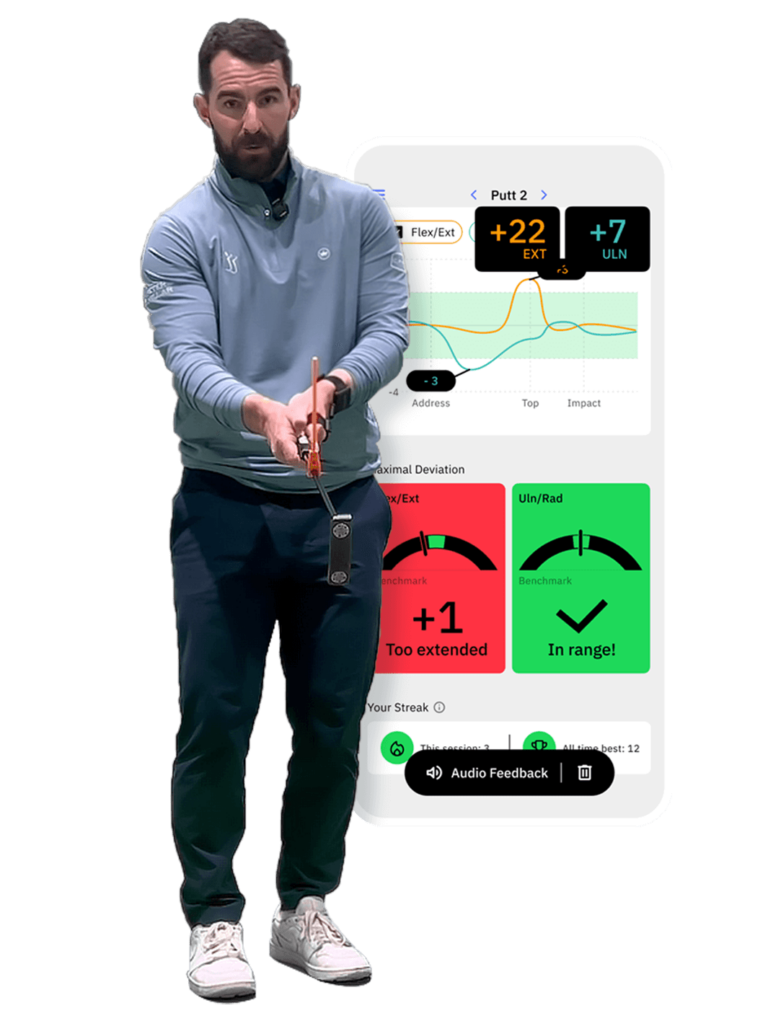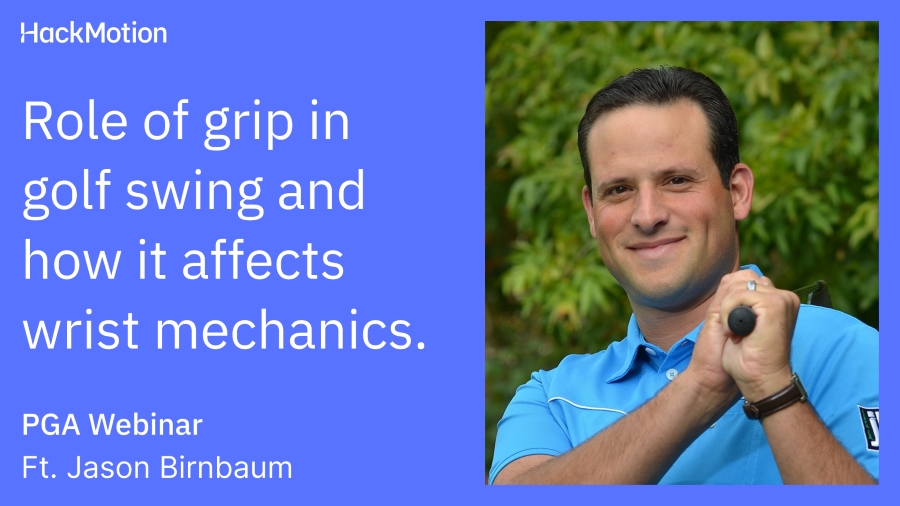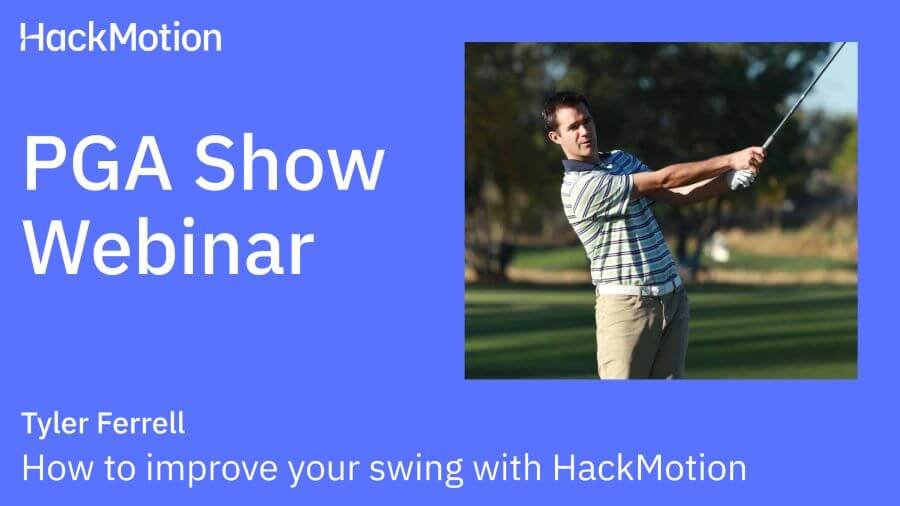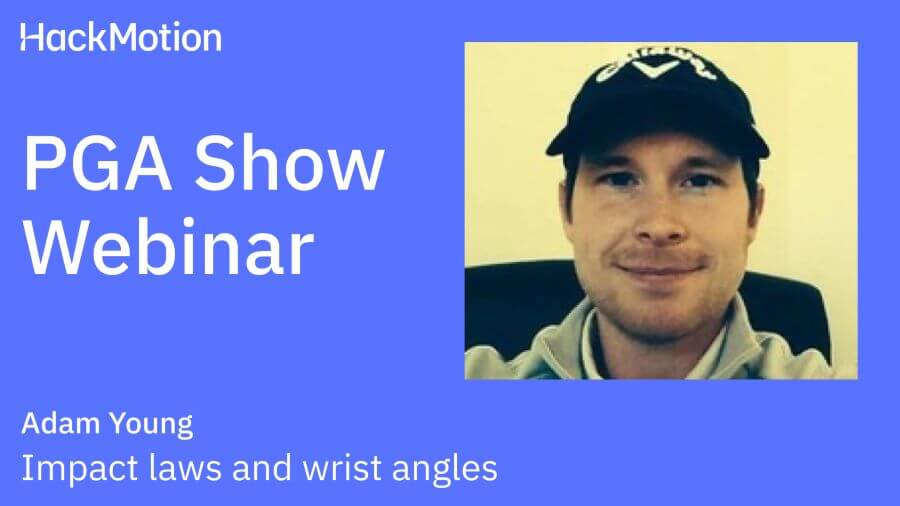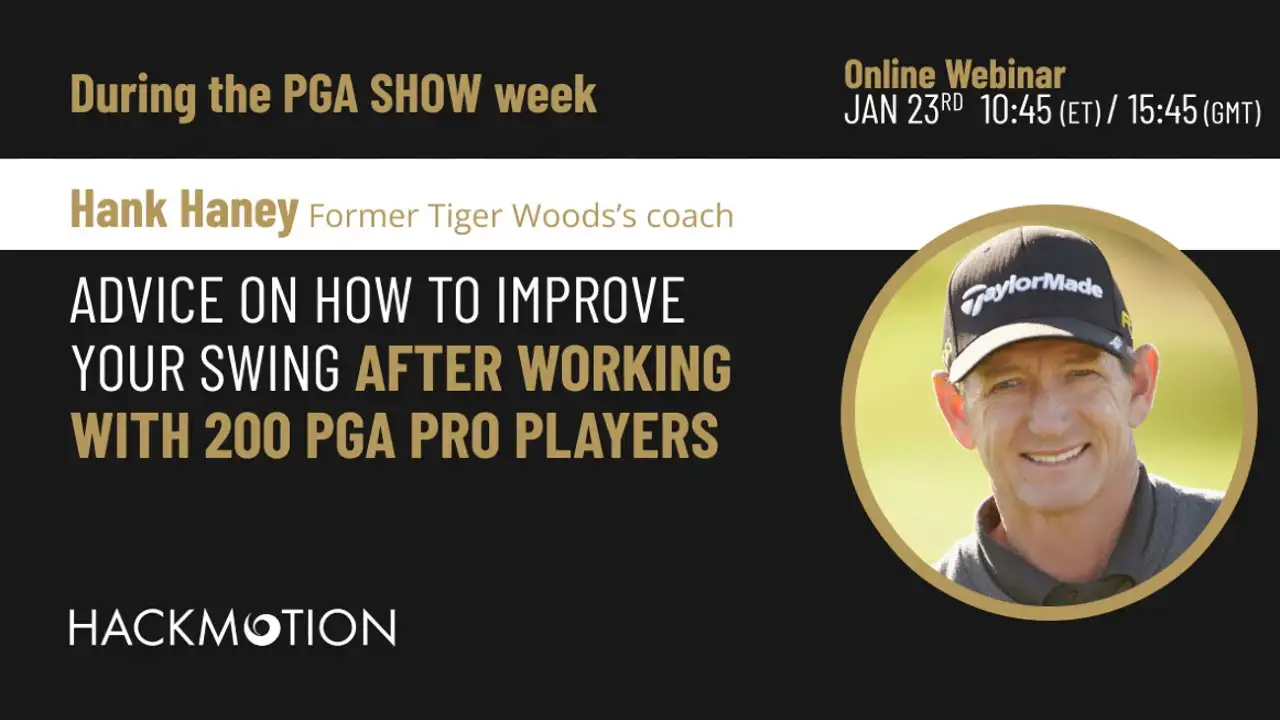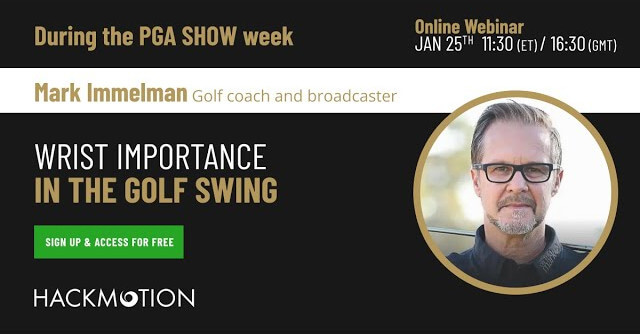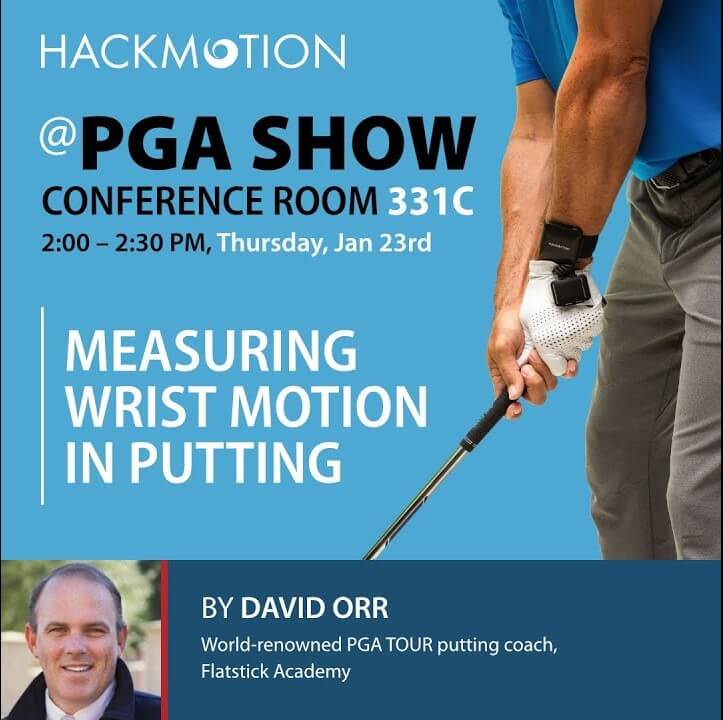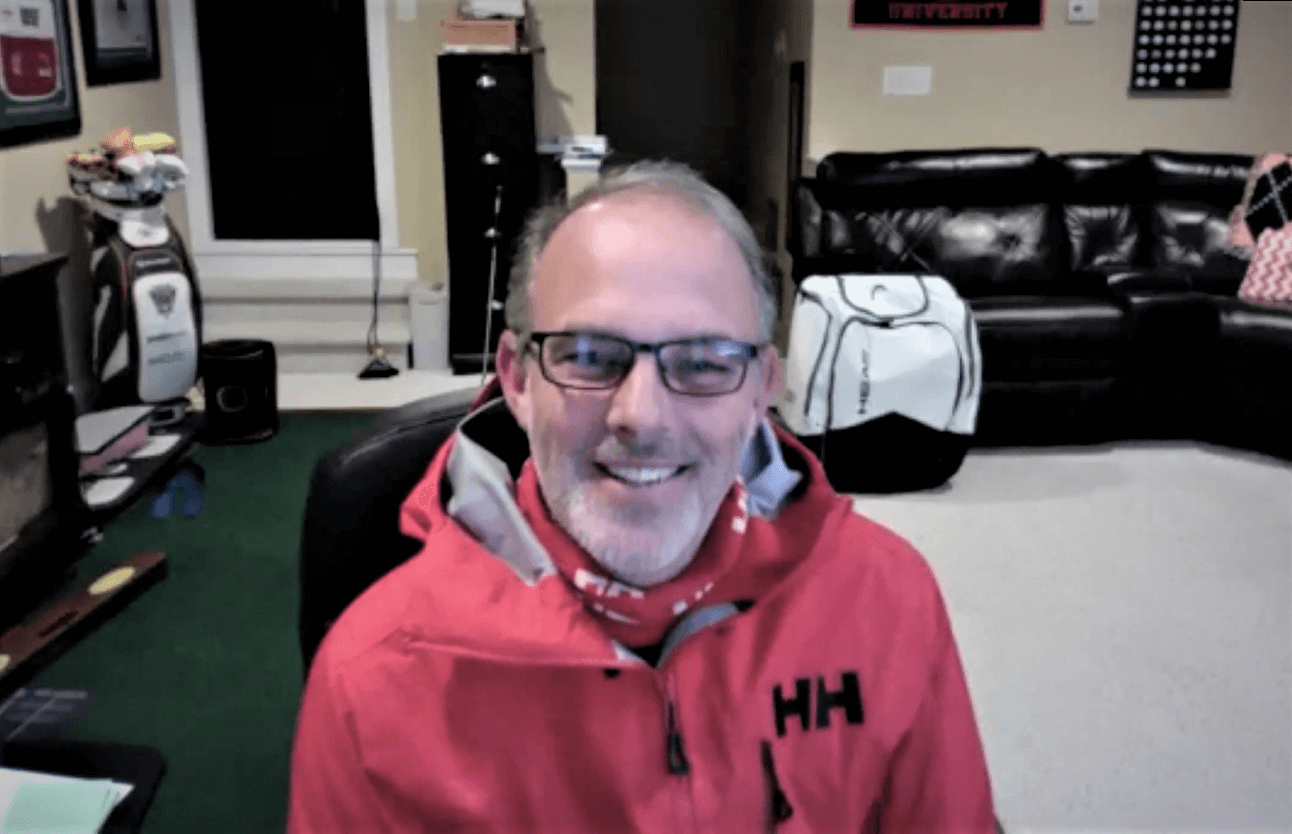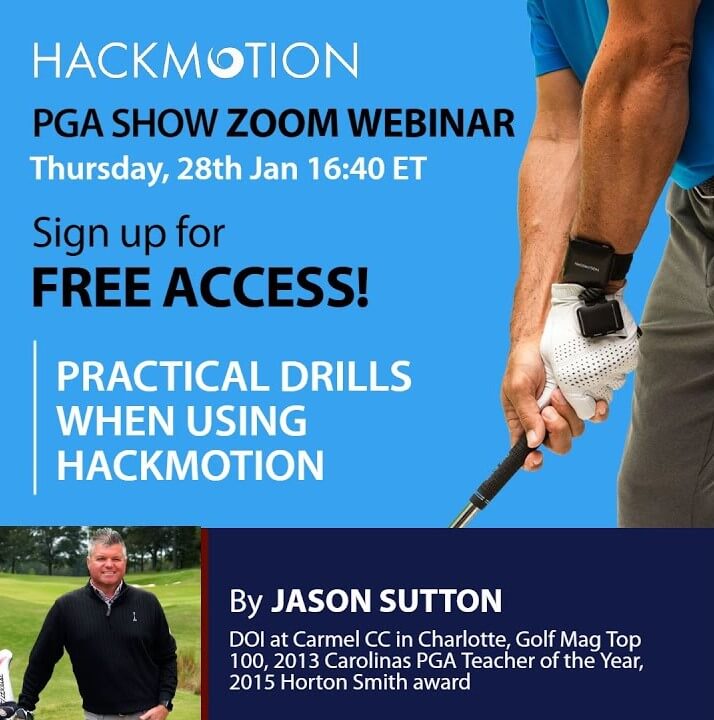Identifying Putting Stroke Patterns and How to Change Them
David Angelotti, Senior Putting Instructor Sea Island Golf Club, explores in detail how to analyze a putting stroke.
Wrist motion is the signature of the stroke, your main goal should not be to eliminate it completely.
If you have developed a functional putting stroke pattern, working on consistency is the priority.
Watch the Presentation by David Angelotti
David discusses the following topics:
- Why to measure wrists in putting, how to analyze HackMotion data;
- What are the coordinative system’s elements affecting the putting stroke;
- PGA TOUR player’s (J. T. Poston) stroke and an example of an amateur;
- Tools and drills to consider for changing the stroke pattern.
Analysis Example: PGA TOUR Player – J. T. Poston
Take a look at the steps how David breaks down the putting stroke and analyzes HackMotion data pairing it with video recordings.
The example is based on 13 foot straight putt by PGA TOUR player J.T. Poston.
Step 1: Observe the Initial Position
In tiles view absolute numbers of wrist angles are displayed.
Breaking down the set up position will help to understand what the player does further in the swing.
J.T.’s wrist is 12 degrees extended (cupped) at address, and has -17 degrees ulnar deviation (undocked). The graphs display the changes in wrist angles, so that all micromovements are well visible.
Graphs will let you undrestand what happens further in the swing.
1. Tiles display the absolute values of wrist angles
Break down the address position to better understand how the motion develops.
J.T.’s lead wrist is 12 degreed extended (cupped) at address and has -17 degrees of ulnar deviation (uncocked).
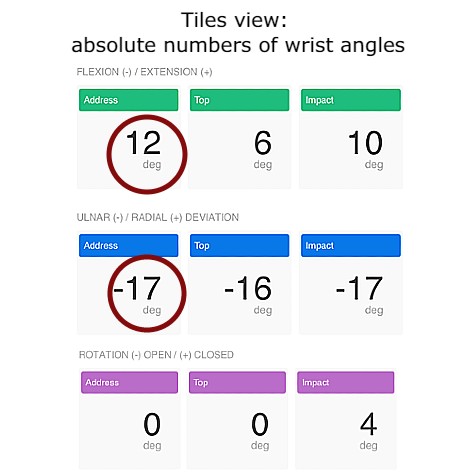
2. Graphs display changes in the wrist angles relative to address position.
At address all lines start at 0 (the base position).
The Graph allows you to observe all micromovements, and fully understand everything that happens throughout the putt.
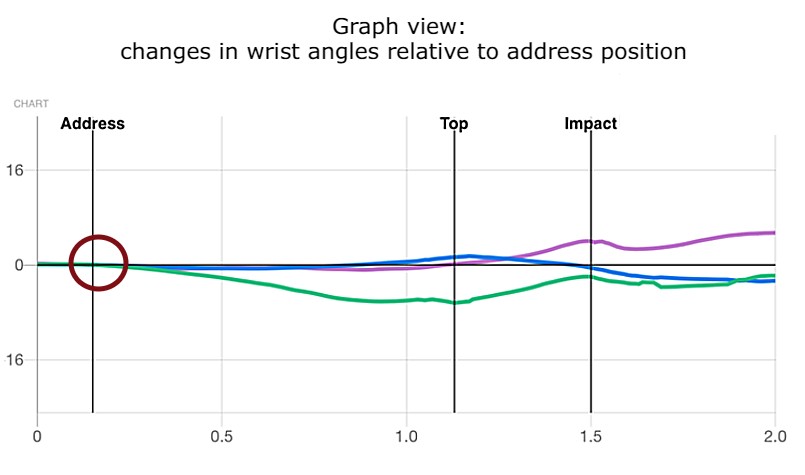
Step 2: Look at Each Parameter Separately
1. Flexion (-) / Extension (+) of the lead wrist
J.T.’s lead wrist moves towards flexion in the backswing.
In the downswing the lead wrist moves back towards extension, but extension at impact is less than at address.
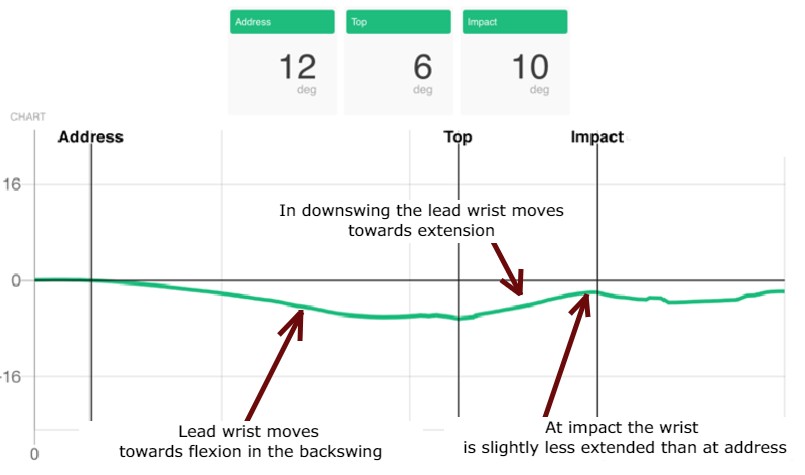
2. Ulnar (-) / Radial (+) deviation of the lead wrist
JT’s ulnar deviation remains stable throughout the swing with a slight reduction at the top of the backswing.

Step 3: Match HackMotion Data with Video Recordings
David recommends to match the graphs with video that allows to observe other body motions.

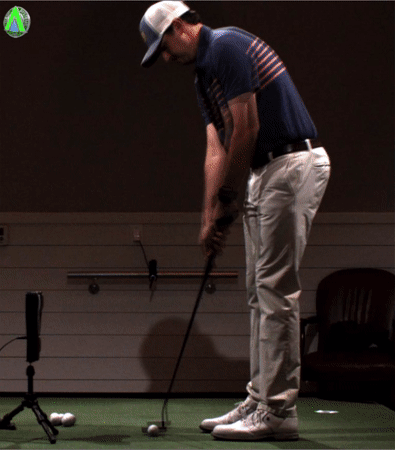
Putting stroke is a result of the whole coordinative system.
Measuring and optimizing the wrist motion can help to understand and develop the whole system and allows to notice micromovements, that are hard to see with the naked eye.
